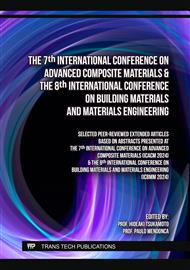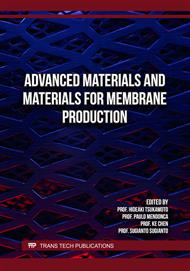p.37
p.43
p.51
p.57
p.67
p.73
p.81
p.87
p.93
Development and Characteristics of Infra-Lightweight Foamed Concrete
Abstract:
This research focuses on development of infra-lightweight foamed concrete with very low density. The first step is to manufacture stable preformed foam with optimizing the applied air and water pressure as well as the foaming agent dosage. Then, an appropriate mixing procedure of infra-lightweight concrete is developed. In the experimental plan, 8 different mixes are prepared and tested with different densities, 200, 300, 500, 600 kg/m3. Two values of w/c ratio are used, 0.6 and 0.4. A superplasticizer compatible with the foaming agent is used in the second case (w/c 0.4) in order to achieve the required workability. Compressive strength, thermal conducting and scanning electron microcopy (SEM) measurements have been measured in order to characterize the developed foamed concrete. The experimental results show that for infra-lightweight foamed concrete, the material density is the main parameter governing its compressive strength and thermal conductivity. The SEM observations provide evidences confirming the results of compressive strength and thermal conductivity. The role of w/c is insignificant on compressive strength and thermal conductivity of such type of concrete with very low density. The findings of this investigation revealed that infra-lightweight concrete with self-leveling ability, appropriate strength and different densities can be produce with giving more concern to the performed foam characteristics as well as the mixing technology.
Info:
Periodical:
Pages:
67-72
Citation:
Online since:
December 2024
Authors:
Price:
Сopyright:
© 2024 Trans Tech Publications Ltd. All Rights Reserved
Share:
Citation:



